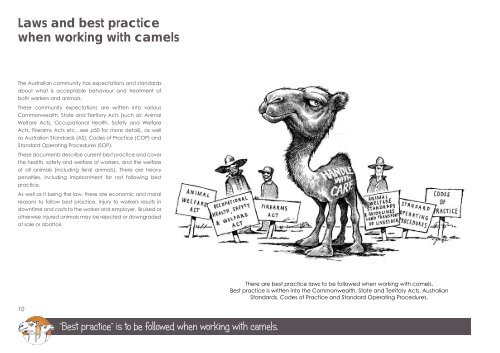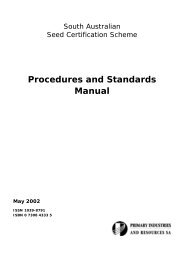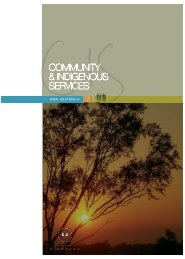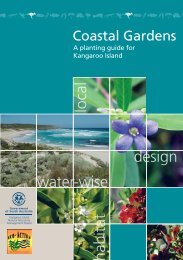Final May 22 Bes Practice Camel Book_web_part1 - Rural Solutions ...
Final May 22 Bes Practice Camel Book_web_part1 - Rural Solutions ...
Final May 22 Bes Practice Camel Book_web_part1 - Rural Solutions ...
- No tags were found...
You also want an ePaper? Increase the reach of your titles
YUMPU automatically turns print PDFs into web optimized ePapers that Google loves.
Laws and best practicewhen working with camelsThe Australian community has expectations and standardsabout what is acceptable behaviour and treatment ofboth workers and animals.These community expectations are written into variousCommonwealth, State and Territory Acts (such as: AnimalWelfare Acts, Occupational Health, Safety and WelfareActs, Firearms Acts etc., see p50 for more detail), as wellas Australian Standards (AS), Codes of <strong>Practice</strong> (COP) andStandard Operating Procedures (SOP).These documents describe current best practice and coverthe health, safety and welfare of workers, and the welfareof all animals (including feral animals). There are heavypenalties, including imprisonment for not following bestpractice.As well as it being the law, there are economic and moralreasons to follow best practice. Injury to workers results indowntime and costs to the worker and employer. Bruised orotherwise injured animals may be rejected or downgradedat sale or abattoir.There are best practice laws to be followed when working with camels.<strong>Bes</strong>t practice is written into the Commonwealth, State and Territory Acts, AustralianStandards, Codes of <strong>Practice</strong> and Standard Operating Procedures.10“<strong>Bes</strong>t practice” is to be followed when working with camels.







